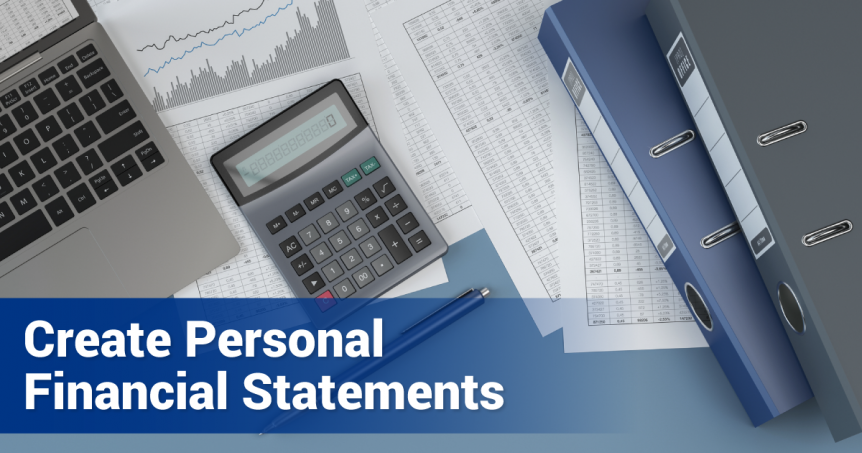No self-respecting Chief Financial Officer would dream of trying to run a company without a constantly updated set of financial statements. Neither should you. That is why the first step, in our Retirement Preparedness Checklist, is to create personal financial statements.
The Purpose of Personal Financial Statements
Personal financial statements serve several very important functions: 1) they tell you where you are; 2) They are a starting point for mapping out where you want to go; and 3) They let you know whether or not you are on course along the way.
Personal financial statements are made up of two documents: an income statement and a balance sheet.
Income Statement
The income statement reflects all of your various sources of income and where all you spend that income. The difference between your income and expenses is money that is, theoretically, available to save.
I like to divide expenses up into two categories: non-discretionary and discretionary. Non-discretionary expenses are the items you have to pay each month – mortgage, groceries, insurance. Discretionary is everything else.
Balance Sheet
The balance sheet is a tally of your assets and liabilities. Assets are things you own. Liabilities are things you owe.
Assets include things like equity in your home, savings accounts and 401(k) balances. Liabilities include mortgages, student loans and credit card balances. The difference between your assets and your liabilities is your net worth.
Track Your Expenses
The first step in creating a set of personal financial statements is tracking your finances. This is a lot easier to do if you do it on an ongoing basis rather than going back and trying to organize a year or two’s worth of statements and receipts.
One of my favorite tools for tracking your day-to-day inflows and outflows is Mint.com. Mint automatically downloads all of your transactions from your bank, brokerage firms and credit card companies and attempts to categorize them for you. All you have to do is spend a few minutes a week looking through and correcting the ones it got wrong.
If you keep Mint up-to-date, creating a personal income statement and balance sheet will be a snap.
When your personal financial statements are complete, then you can really get into the nitty-gritty of retirement planning. Without them, you are just throwing darts.
Personal financial statements are a pre-requisite for many of the consultations I do with clients and prospective clients. If you haven’t done them before, your spending history, in particular, is likely to hold several surprises.
Be Intentional with Your Money
But that is the beauty of personal financial statements. Having them allows you to be intentional about where you spend your money. And being intentional is the key to being financially successful.
On their own, personal financial statements only tell you where you are and where you have been in the past. But their power, for retirement planning purposes, is to use them as a starting point to project the costs of retirement.
If you now know you spend $500 per month on groceries currently, what will that look like in retirement – same, more or less? Put down the number. How about travel? And every other category?
What About What If?
These numbers are needed to answer the critical retirement questions: “How much money do I need to be able to retire?” and “When will I have that much?” They also give you the ability to create alternative scenarios and allow you to answer my favorite question – “What if?”
What if I lost my job tomorrow? How long could I live before I ran out of money?
What if inflation averaged 4.5% over my lifetime instead of 3.5%? How much more money would I need so that i didn’t run out in retirement?
What if I had to spend $150,000 a year on long-term care for ten years? What would that mean to my nest egg?
What if I pushed my retirement back three years?
What if I saved an extra $10,000 a year? You get the idea.
You cannot possibly answer any of these questions without personal financial statements as a starting point.
Once you get started, I think you will be surprised at how easy it can be and how much you can learn and affect just by having the numbers in front of you.
So, while you might think of personal financial statements as being about as exciting as watching trees grow, remember, they are essential tools for making your money grow.
No corporate CFO would run a company without them. Neither should you!







